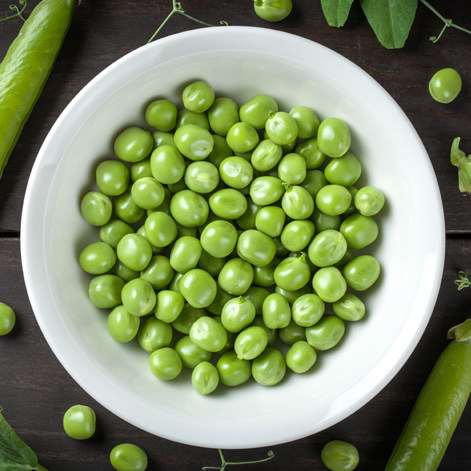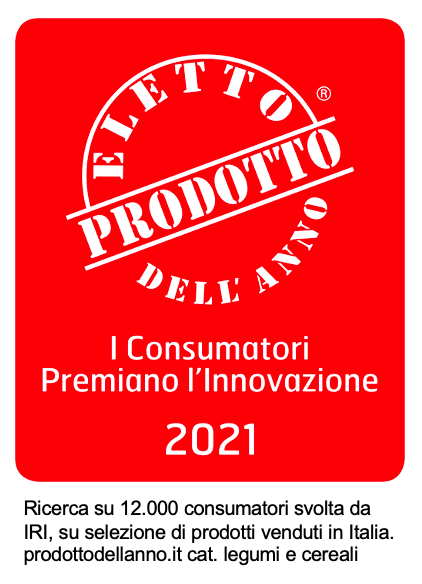Beginning in 1700, the pea plant has been known in botany as Pisum sativum. Peas belong to the Fabaceae family, just as lentils, lupin beans, fava beans, and shell beans do, as they all have a pod in common. The pea is an annual herbaceous plant that grows on one single stalk that is frail and thin, the length of which can be quite variable. Peas, depending on the morphological characteristics of the plant, are classified as dwarfs, vining, or semi-vining plants. Its roots, in all cases, are surprisingly deep, even managing to reach down 80 cm [31 inches] into the ground, so as to optimize their intake of mineral salts and water. The flowers of peas take on a different color according to their type: some are white, some purple or red, but all are gathered in clusters.
Origin
Man has cultivated peas since the Neolithic Era. In antiquity, and especially in the Middle Ages, they were a staple of the daily diet, particularly in the Mediterranean basin and in Europe. Today, peas are grown on every continent in the world, even if mostly in regions with temperate climates. Historically, beyond their direct nutritive function, peas are remembered also because of Mendel and his work on hybridization and transmission of hereditary traits, i.e., the basis for the laws of genetics that continue to this day to be accepted and confirmed by the scientific world.
WHY IT SHOULD BE EATEN
Peas are rich in protein, vitamins A, B1, and B2, as well as in fiber and minerals, such as potassium and phosphorus. Of all the pulses, peas are undoubtedly the least caloric, with very low levels of lipids in them. This characteristic makes them highly suitable for those who wish to lose weight or are on special diets. But that's not all, as peas are also distinguished from other pulses by their significant water content. Their water content, in fact, is estimated to hover around 70-80%. All this, without forgetting that they are a real treasure trove for folic acid, a vitamin that is essential to the development of the fetus in pregnant women, and for the prevention of cardiovascular diseases.

Peas have always been a quick and easy side dish, often combined with meat and fish in stewed dishes, although it would be better to eat them as a protein source, and not as a simple stand in for vegetables.
Peas provide the right amount of protein when combined with pasta or rice, or in a single-course soup. Additionally, when they're pureed, they can be served creamed as a first course, or accompanied by a vegetable side dish, as a second course.
They may be bought fresh – especially in the spring, when they're sweet and tender – or dried.
If you buy fresh peas, shell them and as you do so, drop them into a bowl of warm water, so that the seeds won't dry out in contact with the air. Discard any that float to the surface and boil the rest in salted water for 10-20 minutes. Then plunge them into ice water to keep their bright color intact. To prepare the dried ones, leave them to soak for 4-5 hours if they're split, or 12 hours if they're whole, then discard those that float to the surface, rinse them under running water and place them in a saucepan. Add enough cold water to cover them by at least two fingers, bring them to a boil, skimming off any foam that develops, and allow them to cook for 45-60 minutes, adding more hot water, if needed, and salting them only at the end.

Peas are rich in protein, vitamins A, B1, and B2, as well as in fiber and minerals, such as potassium and phosphorus. Of all the pulses, peas are undoubtedly the least caloric, with very low levels of lipids in them. This characteristic makes them highly suitable for those who wish to lose weight or are on special diets. But that's not all, as peas are also distinguished from other pulses by their significant water content. Their water content, in fact, is estimated to hover around 70-80%. All this, without forgetting that they are a real treasure trove for folic acid, a vitamin that is essential to the development of the fetus in pregnant women, and for the prevention of cardiovascular diseases.




 E-Shop
E-Shop

 Back
Back








